
This morning we got to sleep in an extra hour and had breakfast in the hotel at 8:00am. The busses left by 9:00am and headed toward the Naval Academy in Annapolis Maryland.
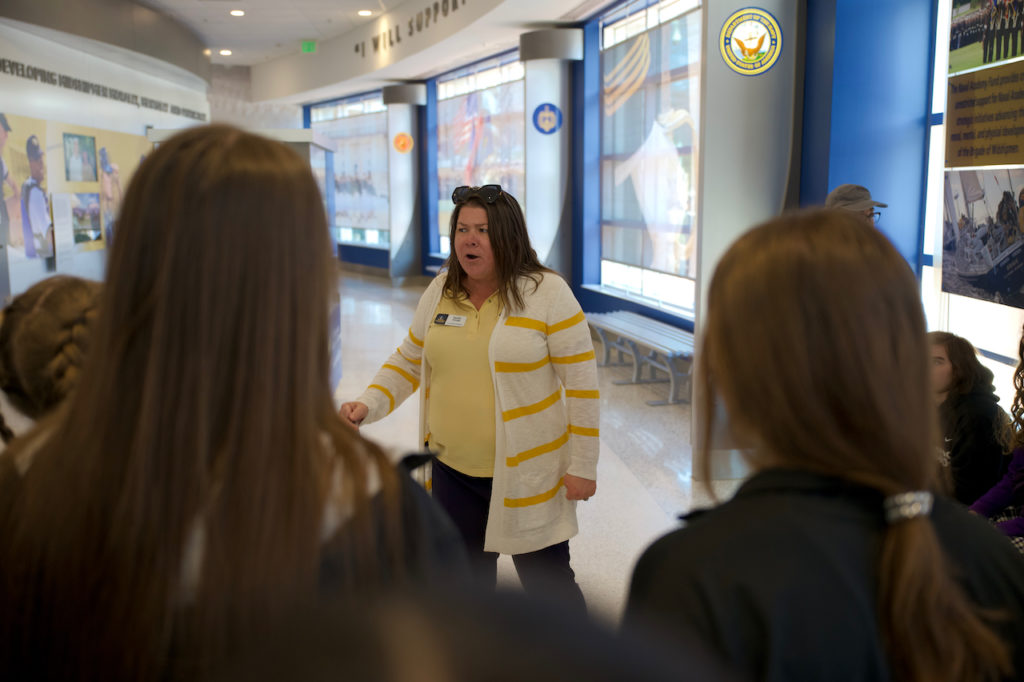
At the Visitor Center we were divided into smaller groups and joined up with our guide Paige for a tour of the Academy. She explained that her connection to the Academy is that she joined the Navy directly out of high school as a medic. She then went to college on the GI Bill and ended up marrying a career Army officer. They now host five students from the Academy.
Before we left the Visitor Center, she said that the land used to belong to Army and was know as Fort Severn. It was named after the river and was designed protect the area from British forces. It was abandoned by 1845 and was passed in to the Navy free of charge. The Navy used it as a place to train sailors and this marked the beginning of the Naval Academy.
It is now 177 years old, and is a STEM school. There are 26 majors, and 19 of them are STEM related. Today there are 4500 students who are called midshipmen. There are also 600 faculty members and half of these are civilians.
The school is free for students (they actually get paid), but they are required to serve in either the Navy or Marines for 5 years after graduation. 25% of graduates go on to be Naval pilots. In the summers, the students can go home for one month but then they must serve in either the Navy or Marines for the remainder of the break.
She explained that many things are referred to by different names that are customarily used. For example, it is not a “campus” but a “yard” and buildings do not have “floors” but “decks”. They students also are called by different names depending on their year. Freshmen are “Plebes” which means “common people”. Sophomores are “Youngsters”. Juniors are “Second Class”. Seniors are “Firsties”.
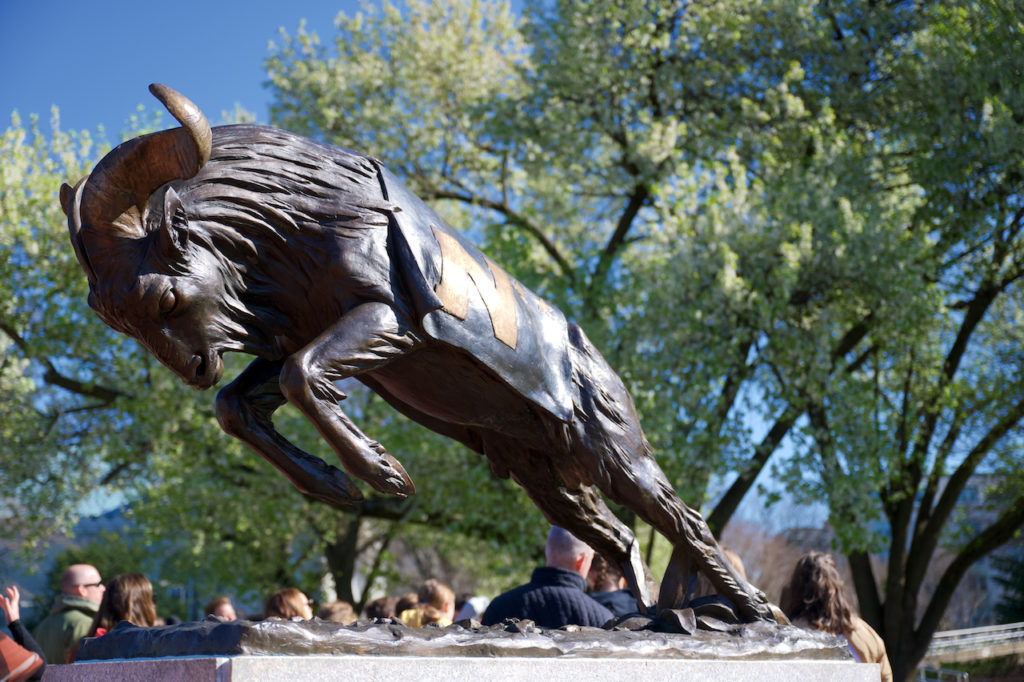
Next we went outside near a statue of their mascot which is a goat. She explained that they have had 37 different goats serve as mascot and all have been named “Bill”. She also told about how the goat became the mascot, which involved an encounter with their rival Army.
Paige used this as an opportunity to talk about sports at the Naval Academy. She said that 90% of their students played a high school sport and that every student on campus is required to participate in a sport either as part of a varsity team or a club. The Naval Academy has the most sports teams of any college in the country.
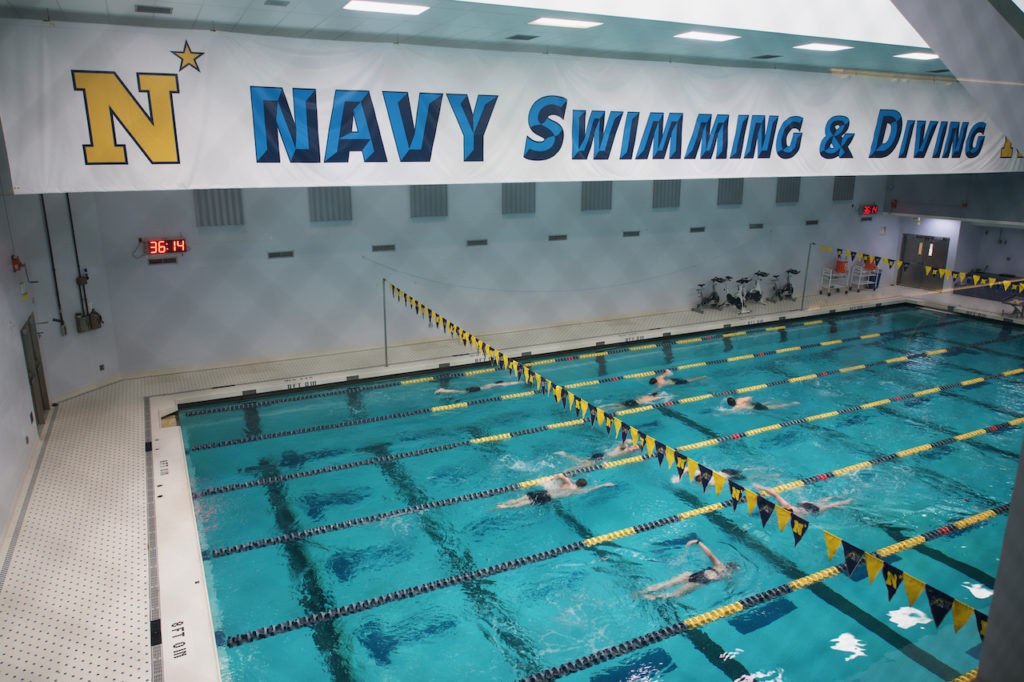
She then took us to Lejeune Hall, which houses the swimming and wrestling programs. We got to see several of the polls used for swimming classes and sports. Every midshipman must take swimming and it takes swimming 15 laps (1500 meters) in 30 minutes to make an “A” in the class.
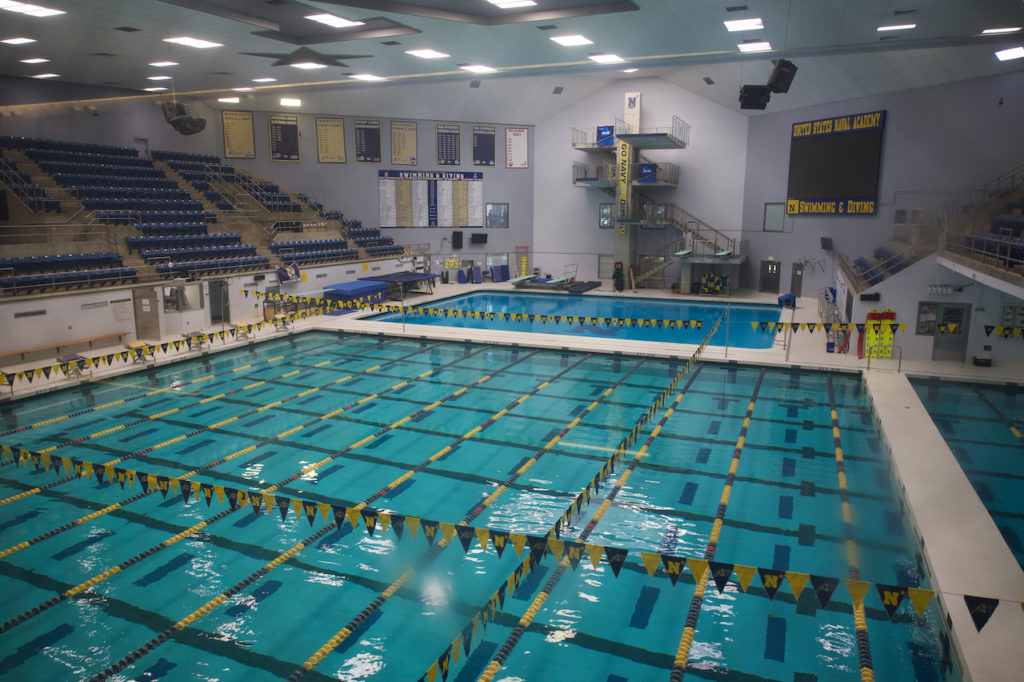
We also saw their diving board complex. Every student is required to learn how to dive off of the 30 ft. board in order to graduate.

Around the outside of the pools was the sports hall of fame with lots of memorabilia. The night is this included a case with gold painted footballs commemorating every win over Army dating back to 1890 They have more total wins in the rivalry and won 14 in a row at one point. footballs. This was really cool.

There were also two Heisman Trophies that had been awarded to Roger Staubach and Joseph Bellino.
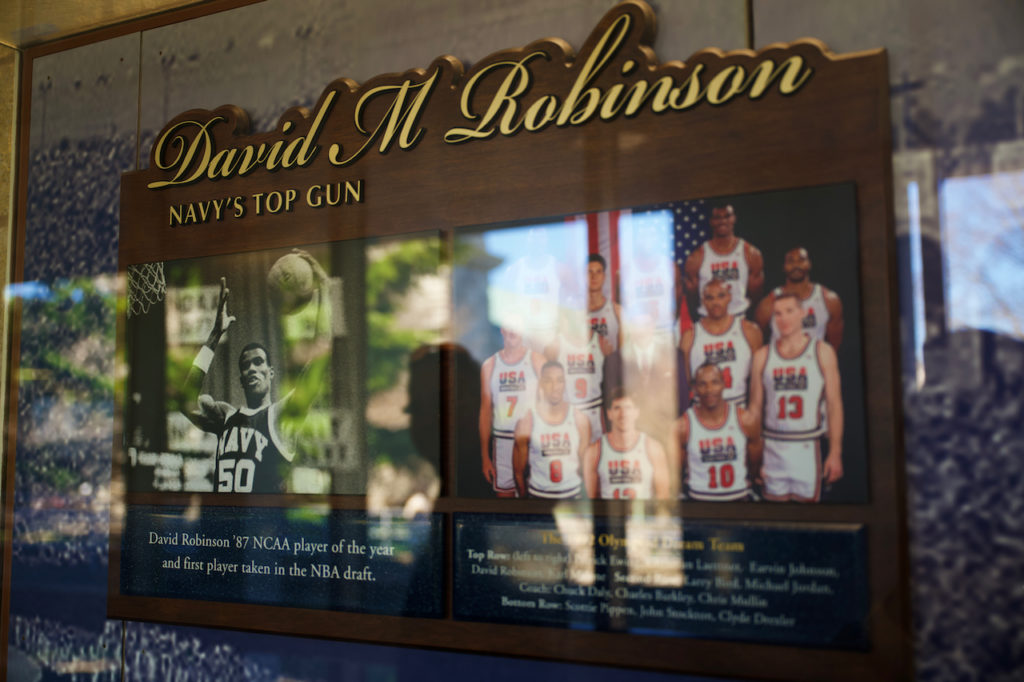
Finally there was a case that commemorated athletes who had competed in the Olympics. This included NBA superstar David Robinson. The school has a hight limit of 6 ft 6 in due to submarine dimensions. Robinson was one inch too tall at 6 ft 7 in when he was accepted. He given a special exemption due to his basketball prowess and his excellence in math and piano. By the time he graduated, he had grown to be 7 ft 1 in.

Back outside, Paige took the group by a row of beautiful while homes. These are private residences for people who work at the school. It is called “Captain’s Row” because you must have been a Captain or higher rank to live here. The homes are over 120 years old and each one is 5,500 sq ft.
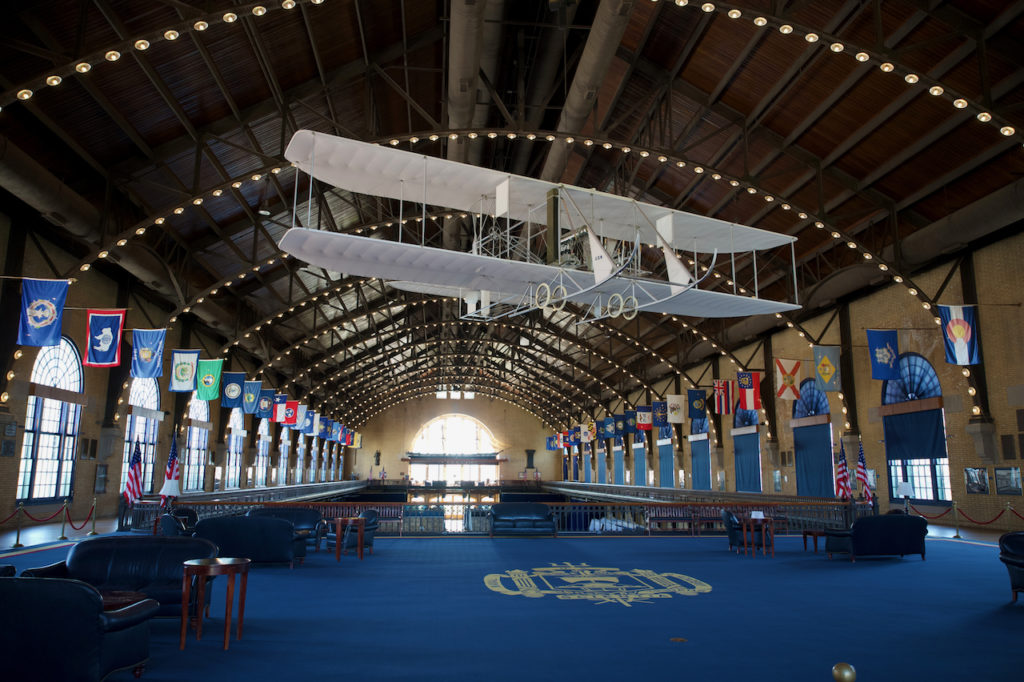
Our next stop was Dahlgren Hall. It is a huge building that was designed to look like a Parisian train station. Inside is a replica of a 1911 Wright Brothers plane that was flown on campus for 15 minutes along with flags from every state in the union. In here Paige explained a little about the many student activities that take place here.

In front of this building are two Japanese torpedoes that were commandeered in WWII in order to be studied. At the time the Japanese army was able to put 1,000 lbs of explosives in a torpedo and we were only able to fit 600.
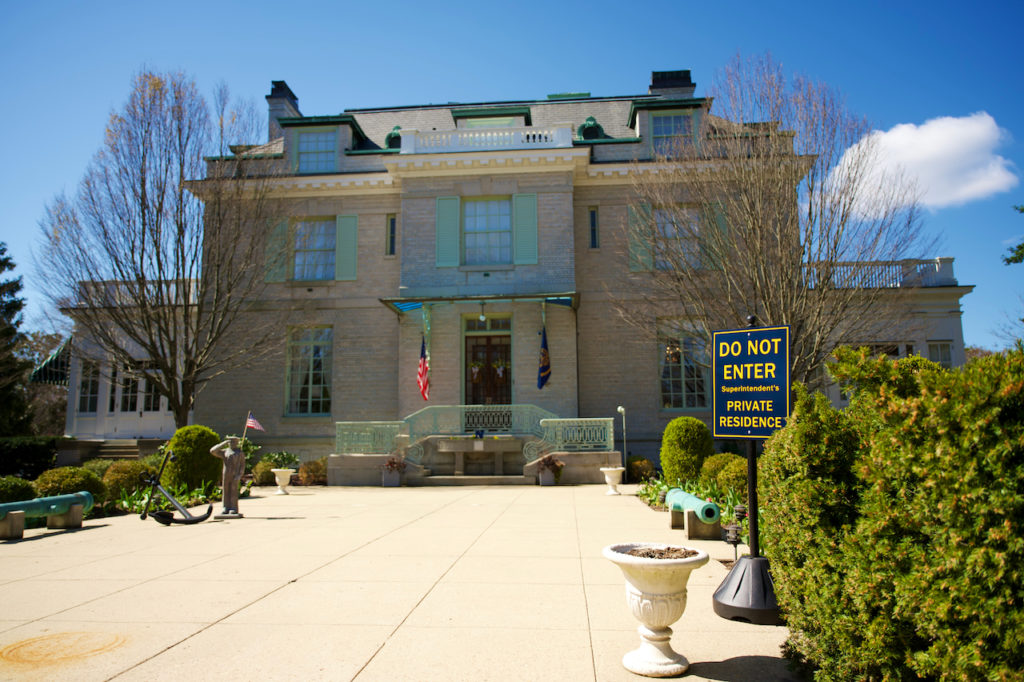
Next we saw the Buchanan House, which is the home of the school superintendent. It has 34 rooms, and is 14,000 sq ft. It is used for entertaining and the family lives upstairs. It is named after the first superintendent who later joined the Confederacy. It is currently on the list of buildings for congress to consider renaming.
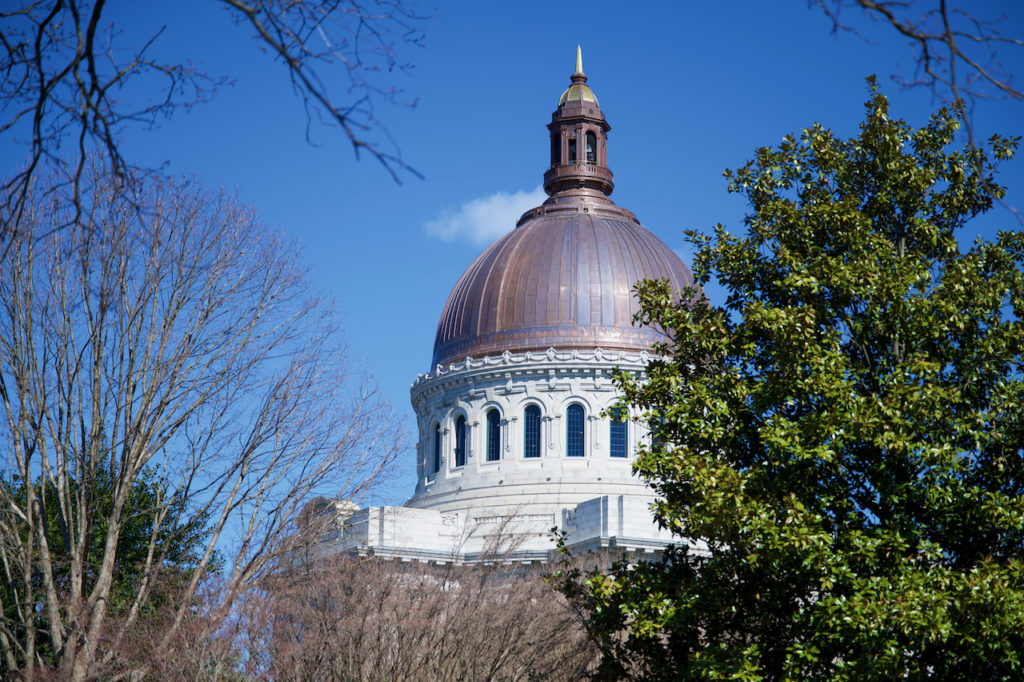
From there we went inside the Chapel with the amazing copper dome.
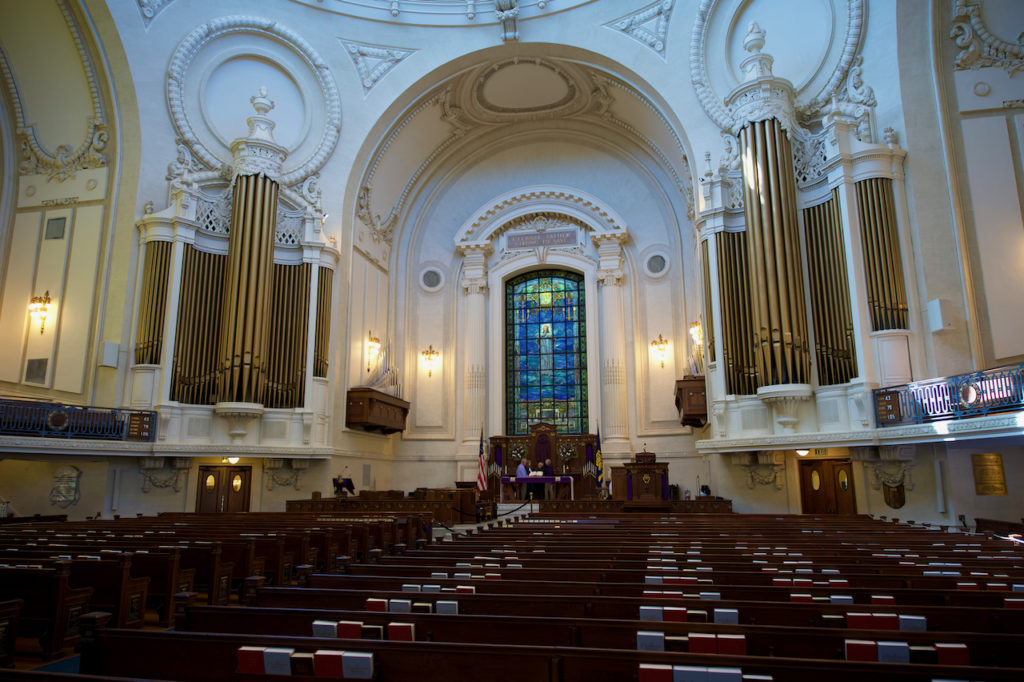
Inside there are beautiful Tiffany stained glass windows and a massive pipe organ. Midshipmen are not required to attend worship. The Chapel was completed in 1908
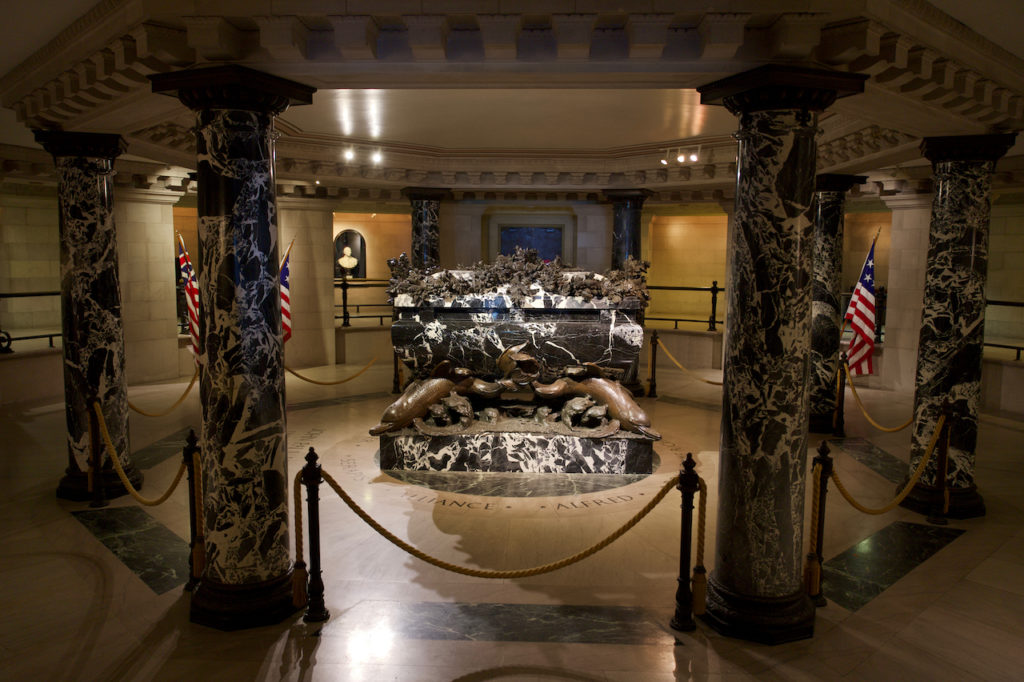
Under the Chapel is the Crypt, which contains the remains of Navy war hero John Paul Jones. He fought an epic battle off the coast of England in the Revolutionary War. It was in this fight that, when asked if he wanted to surrender after losing the flag to his ship, he he famously stated, “No! I have not yet begun to fight”. After the war he went to Russia and fought under Catherine the Great. He eventually died in Paris with no money. A US politician ultimately paid the money for him to be buried in Paris. He was placed in a lead coffin with hay and alcohol.
Over 100 years later, when there were plans to build a Chapel and Crypt at the Naval Academy, they began to search for his to tomb in Paris in order the move him to Annapolis. It took six years to find him, and he was so well preserved from the alcohol that they were able to identify him from his sculpture. Several from our group said that swing the Crypt was the highlight of today.
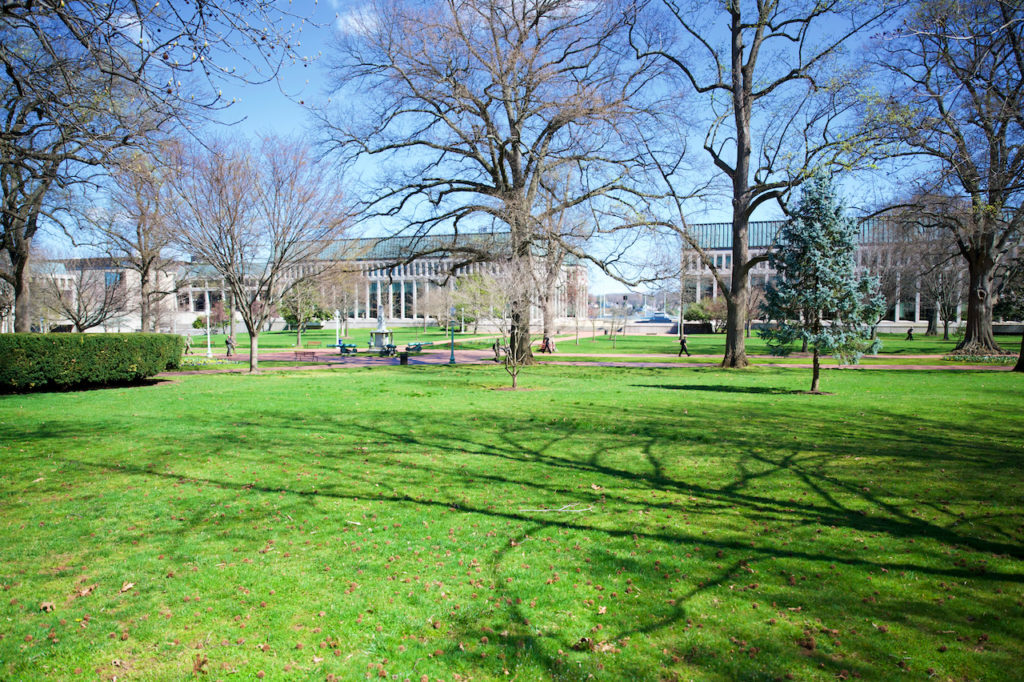
After the Crypt, we walked through the academic side of yard. Paige told us that every midshipmen will learn to sail and showed us the spot a student first measured the speed of light in 1907, earning the Nobel Prize. While walking, she pointed out that the senior students were all wearing the uniform of their chosen career today.

Our final stop was Bancroft Hall, which is the worlds largest dormitory. Inside we were able to see a sample dorm room and took a small group picture on the stairs by the main entrance.

We left the Naval Academy and then walked to “downtown” Annapolis for lunch. Our little group ate at the Annapolis Market House, and it was quite lovely. I had fish and chips.
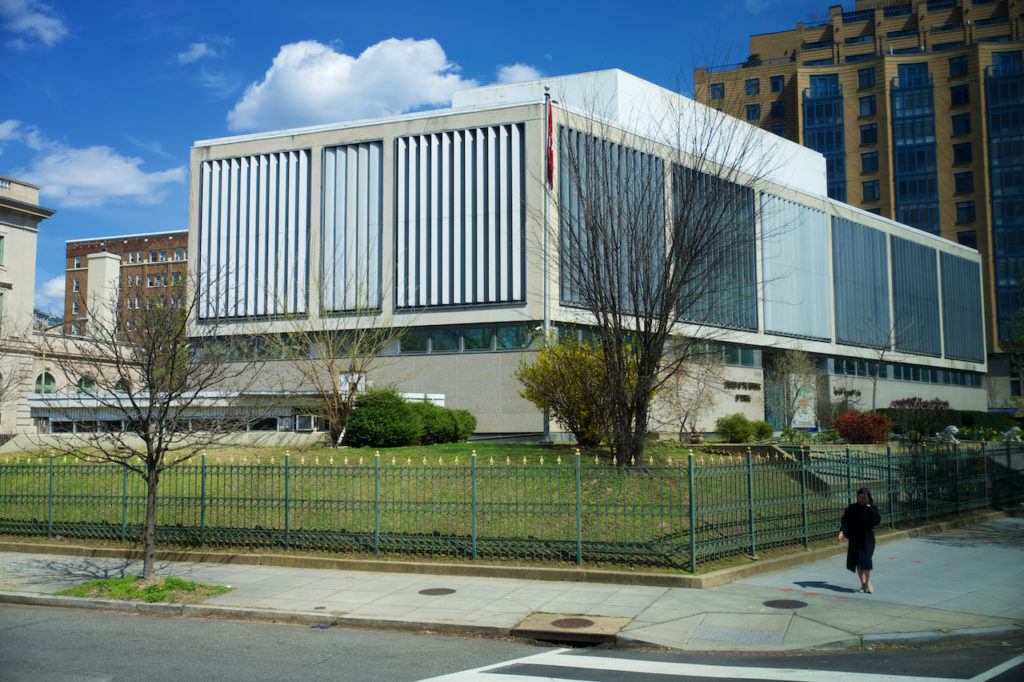
After lunch, we boarded the busses to head back to DC for a Visit the National Cathedral. Along the way we drove through “Embassy Row” where many international embassies are located (the Tunisian Embassy is pictured above).
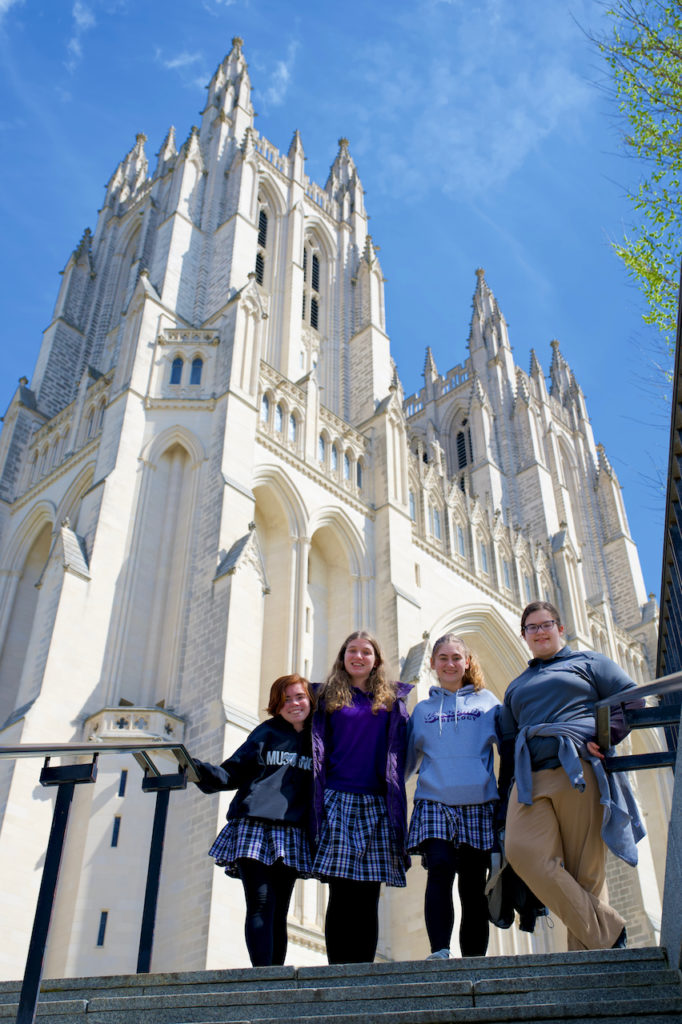
At the National Cathedral we divided into three smaller groups for a tour. Our guide was Jane and we started in a small room by the entrance that is dedicated to civil rights.
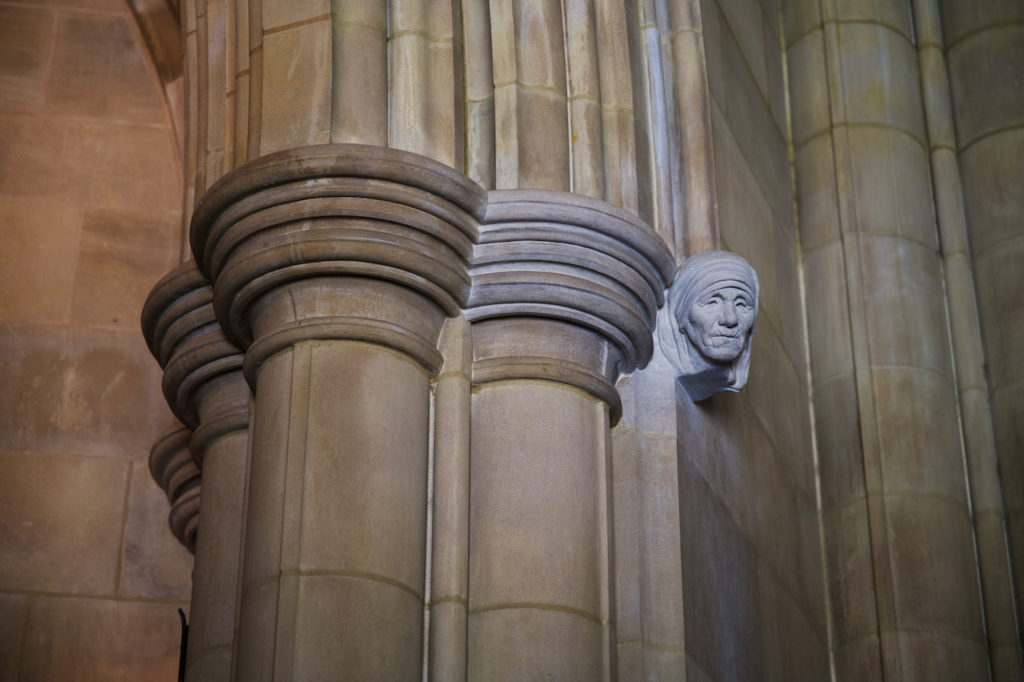
She showed us small sculptures of Rosa Parks and Mother Theresa on the walls.

In the sanctuary she took us to a statue of George Washington and talked to us about the history of the cathedral. On Washington and Pierre L’Enfant’s original plans for DC they had included a National House of Prayer that was never built, but this was the reason why the National Cathedral was ultimately started.

The cornerstone was laid in 1907, but the structure was not finished until 1990. George H. W. Bush was the President when it was completed and his funeral was also conducted there. Today it is the second largest cathedral in the United States.
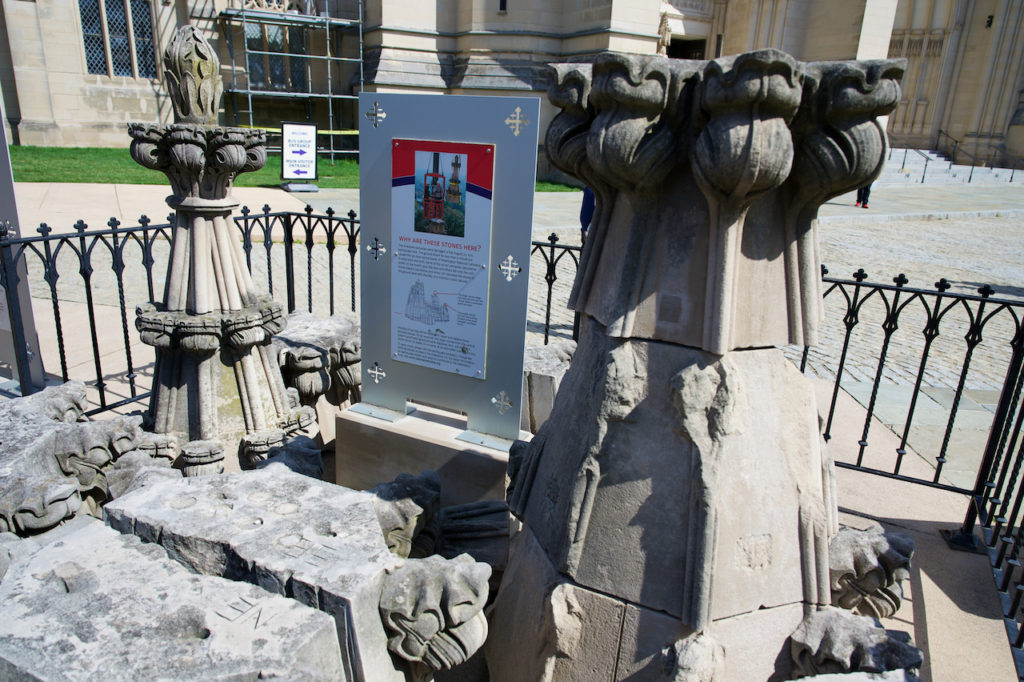
Jane also talked about the that happened 11 years after completion and caused 32 million dollars in damage. We had earlier seen some of the damaged pieces on display in front of the cathedral.

Jane then took us to the Space Window, which contains a moon rock She said that the three original astronauts from the first mission to land on the moon were present for the dedication when it was completed.

In the center of the sanctuary, she talked about the Gothic architecture and the reasons why the National Cathedral is an Episcopal Church. This is related to the Episcopal ties to the Anglican Church of England. George Washington was an Anglican.
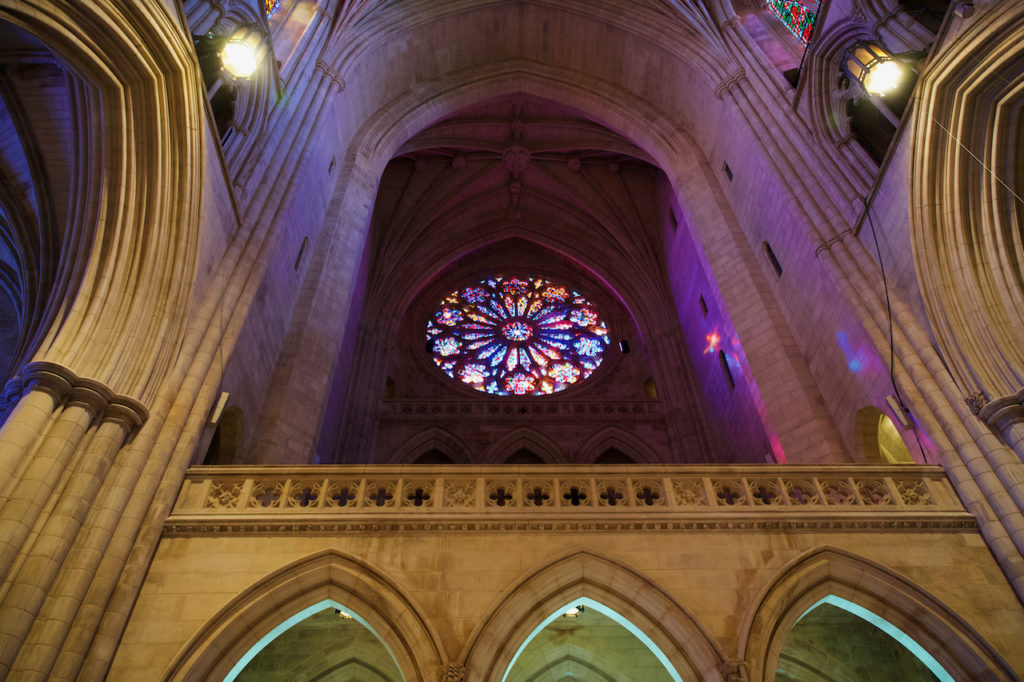
She pointed out the Creation Rose Window in the back of the sanctuary that is made out of 10,000 pieces of glass.
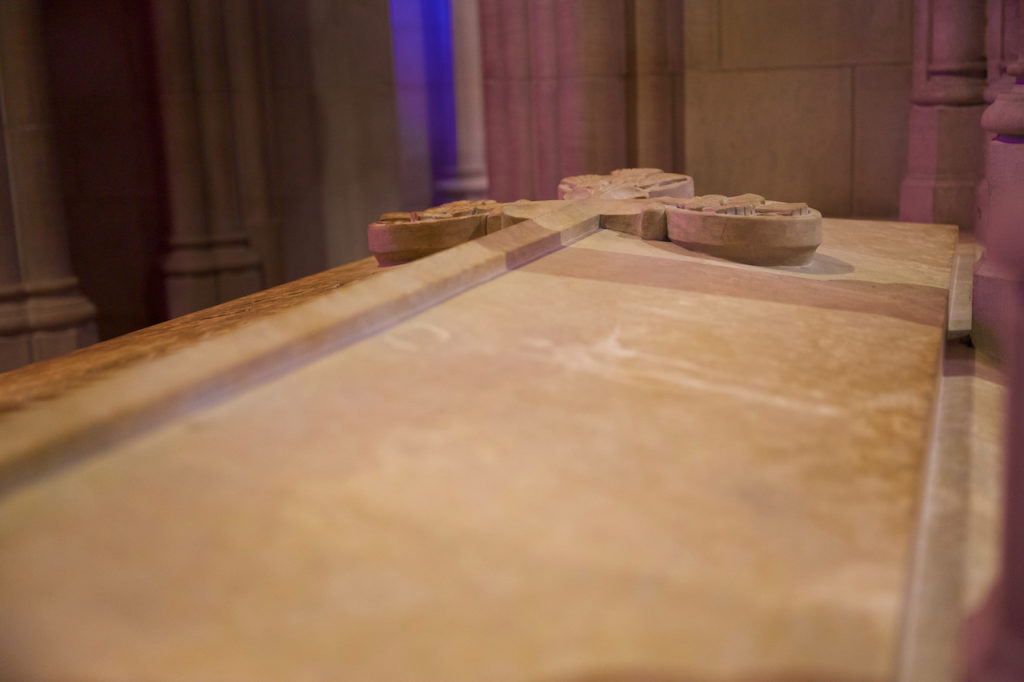
Jane showed us Woodrow Wilson’s tomb in the “War and Peace Bay. Wilson is the only US President to be buried at the cathedral.

Next we went closer to the front where she talked about the the cathedral being built in the shape of a cross.
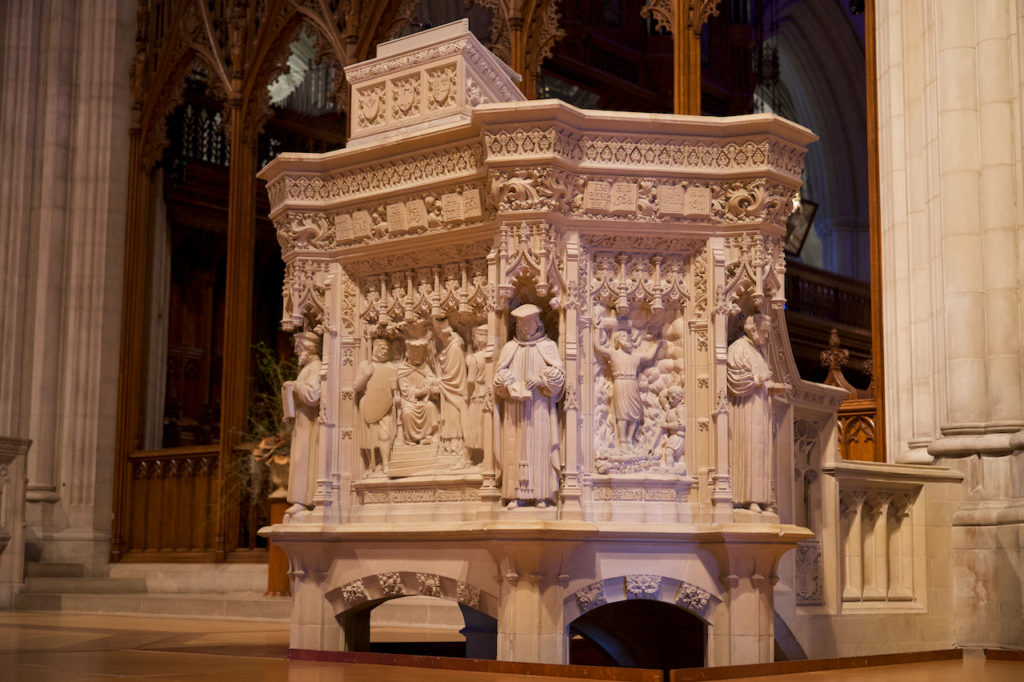
We saw the Canterbury Pulpit which has been used for sermons by many famous religious leaders like Billy Graham. Martin Luther King Jr. preached his final Sunday sermon here just four days before his assassination.
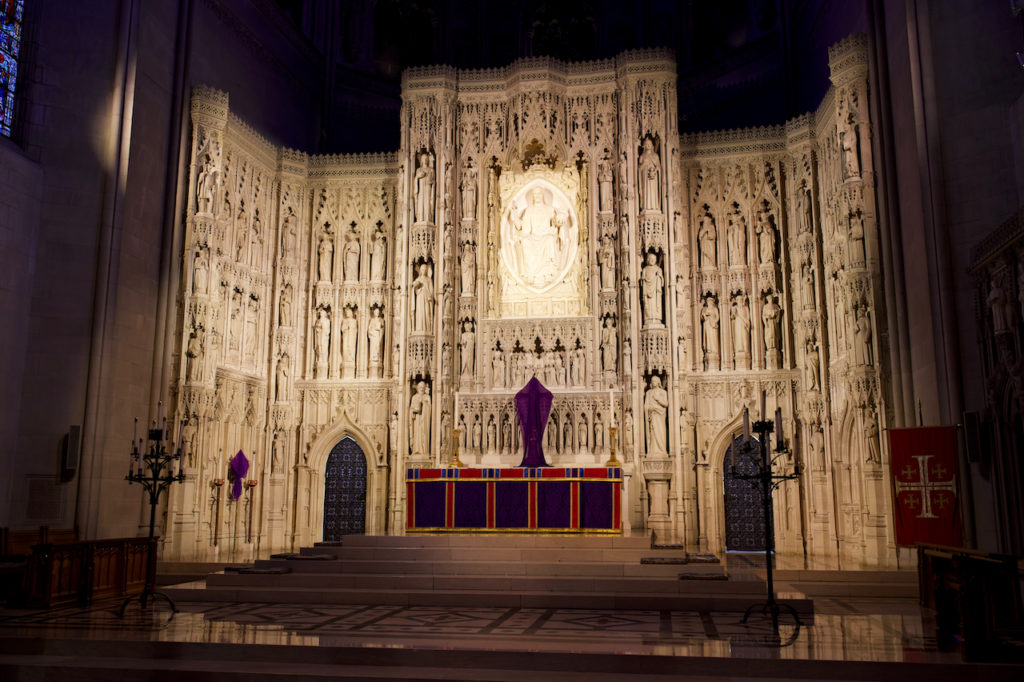
Jane then took us through a number of chapels on our way to the High Altar. The back of this altar is covered with carved images with Christ in the center. The six figures on either side of Jesus represent the sheep mentioned in Matthew 25: “…you clothed me”.

She then explained that a building is only a cathedral if there is a bishop’s seat in the high altar and then showed us the seat.

From here we could also see the massive pipe organ that contains 10,600 pipes. Soon after leaving the High Altar, we said goodbye to Jane and departed for the busses. Our next stop was the mall to visit a number of memorials.
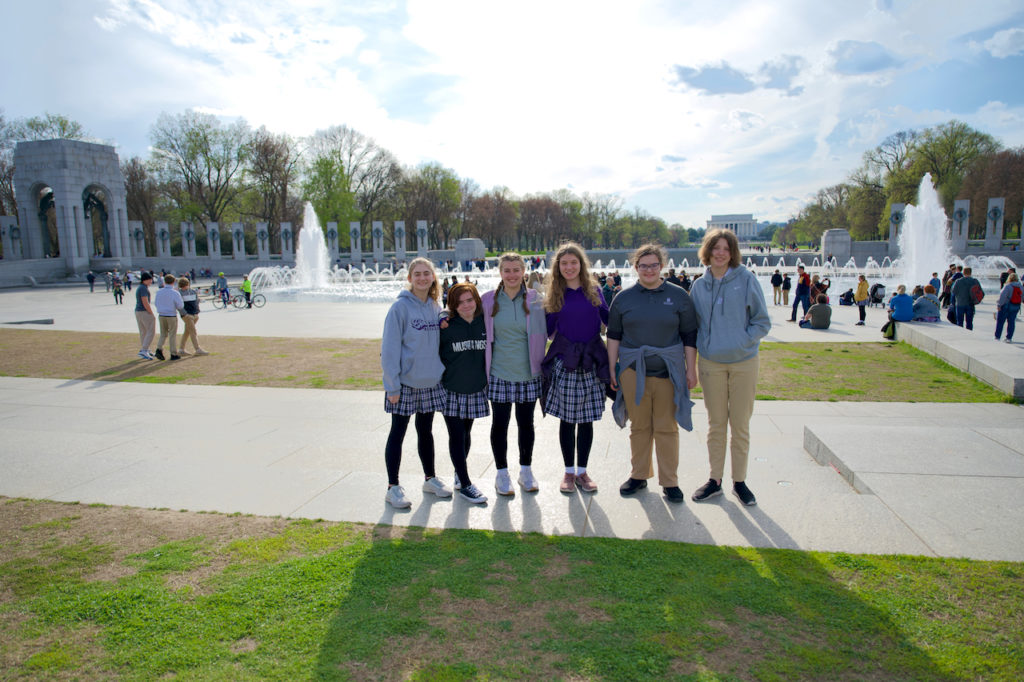
The first one was the World War II Memorial. Liz talked about how Tom Hanks and Bob Dole were two of the primary proponents when help make this site a reality. She talked to the group about the symbolism of the memorial.

The entire structure is in the shape of an oval like the desk of a commanding officer. In the middle of the oval are fountains that create noise to represent the sound of war. The site is divided into a Pacific side and an Atlantic side with stones for each US state and territory around the outside.

Each states’s stone has a wheat wreath on one side and an oak wreath on the other. The wheat is to represent agricultural support during the war, and the oak to represent industry. Between each state is a braided rope to represent the ties that bind everyone together.
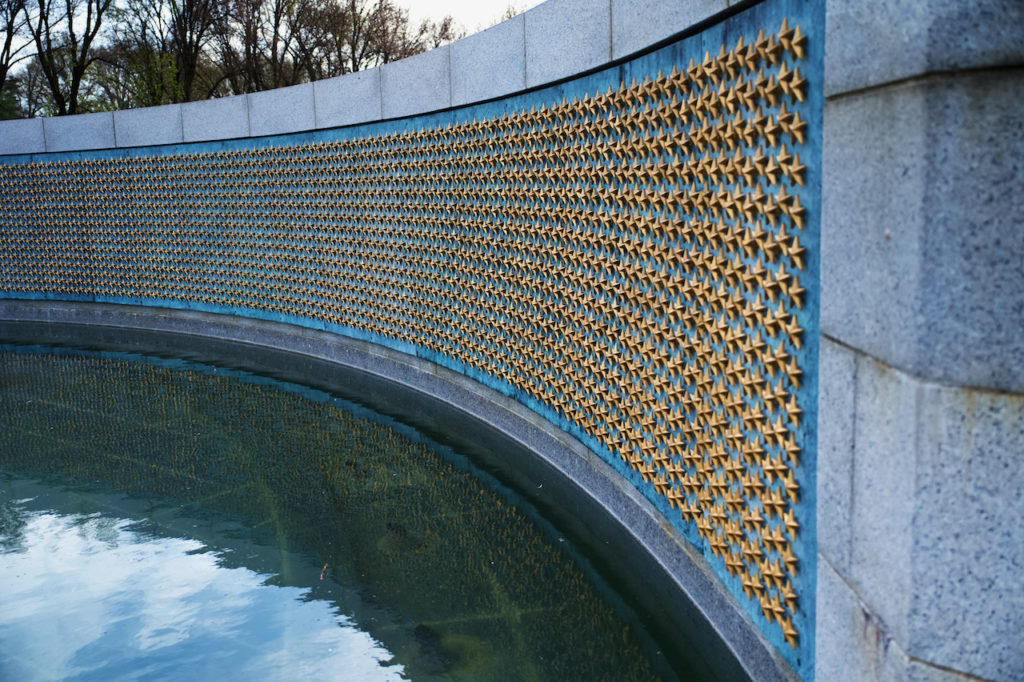
At the back of the site is a wall of stars that represent those who gave their lives in the war with each star representing 100 people. After Liz finished speaking, the group took a few minutes to walk around the memorial.
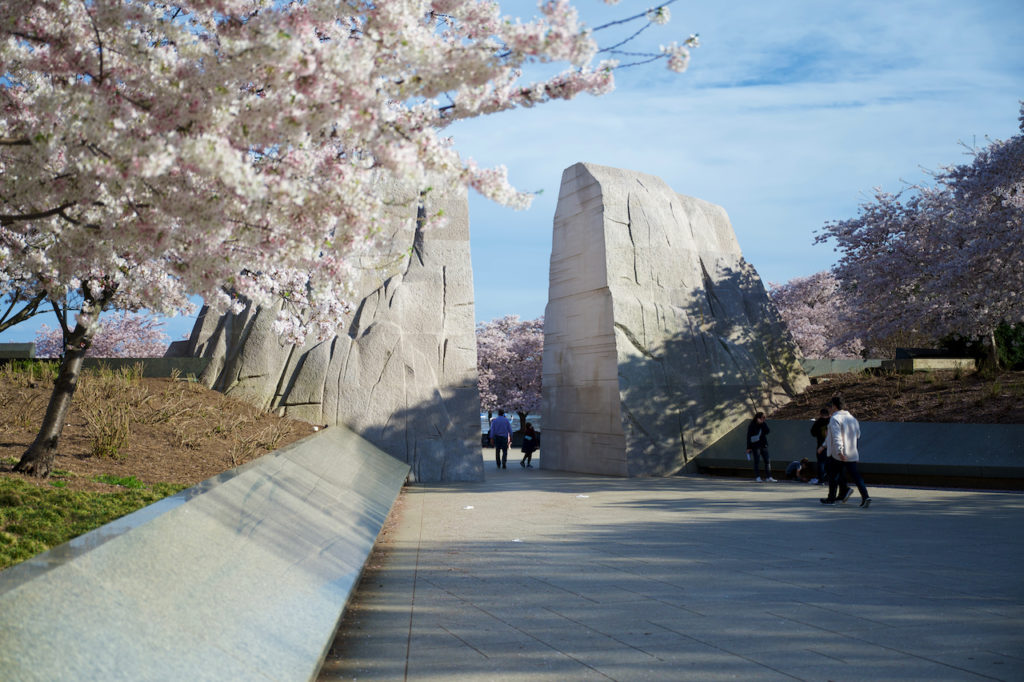
The group then walked to the Tidal Basin and the Martin Luther King Jr. Memorial, which was completed in 2011. Liz again talked to us about the symbolism of the memorial. It is located at 1964 Independence Avenue, which is the year of the Civil Rights Act.
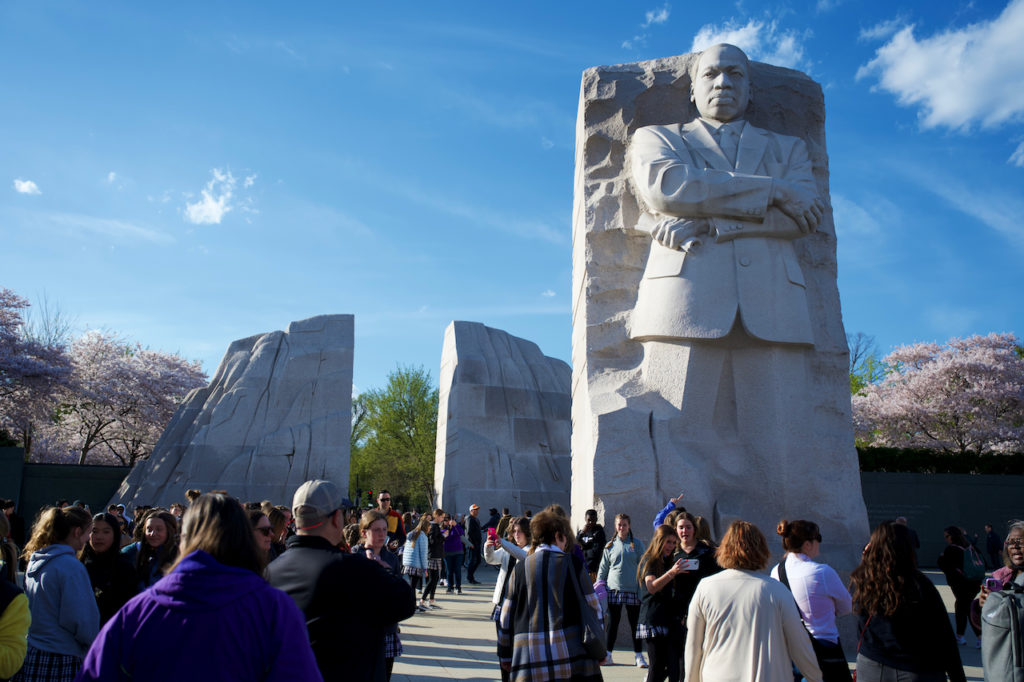
There is a mountain split in two with an unfinished statue of Dr. King on the other side. This comes from a quote during his “I have a dream” speech: “Out of a mountain of despair a stone of hope”. He is left unfinished to show that his work is incomplete.
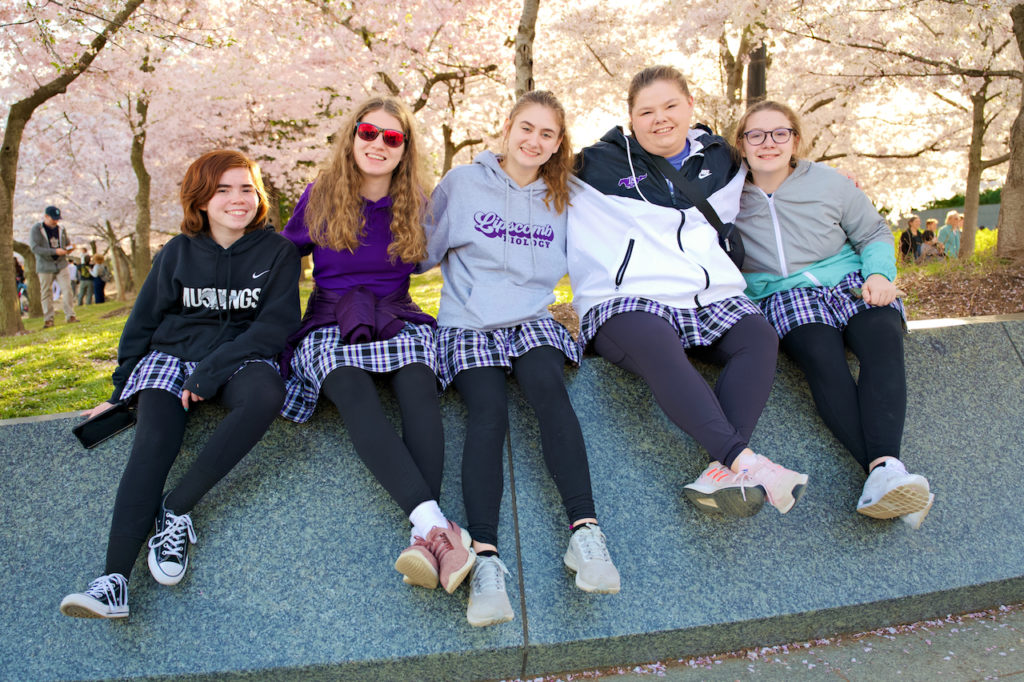

From here we also had a great view of the cherry blossoms around the Tidal Basin which are stunning.
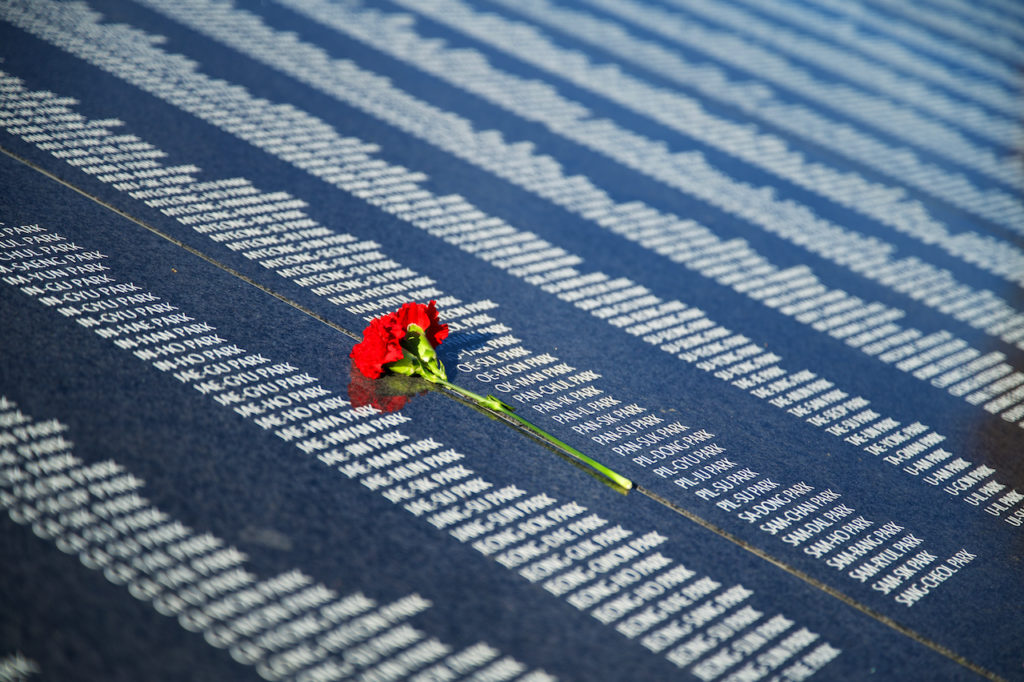
Next we walked to the Korean War Memorial. Katherine explained that they have recently opened a new addition that contains the names of all who fell during the war. She also pointed out that the demilitarized zone between North and South Korea is on the 38th parallel, and so is this memorial in Washington DC.

The main part of the site contains 19 larger than life soldiers representing a platoon. They are all looking in various directions to have a 360 degree view of their enemies.
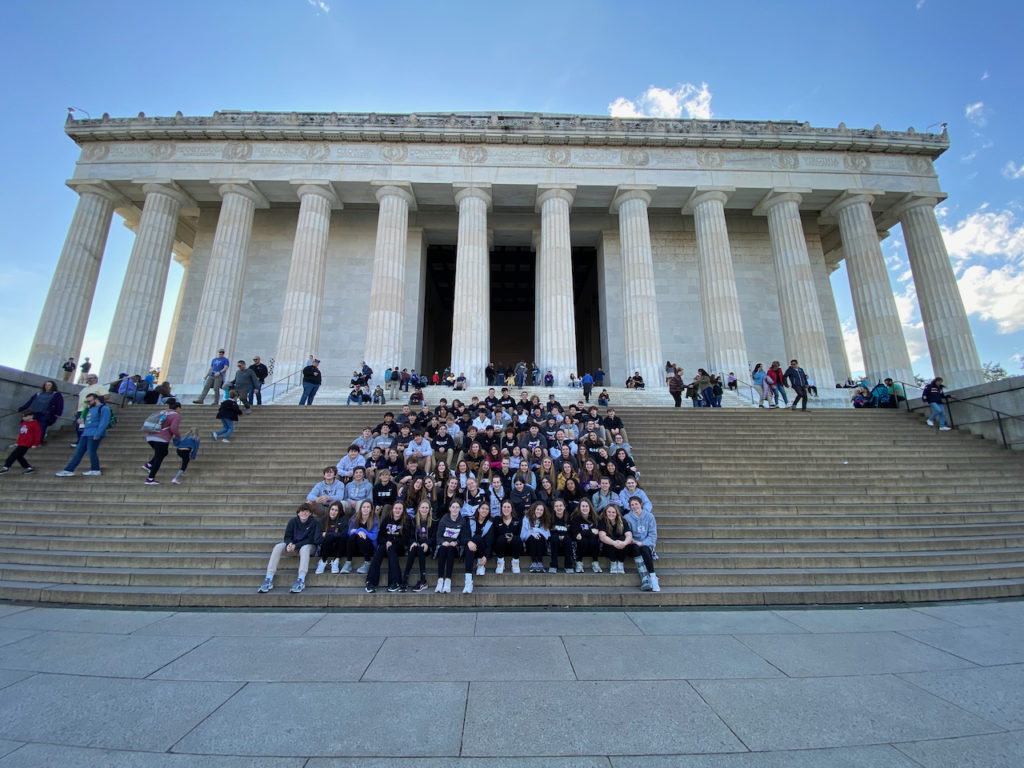
From there we walked over to the Lincoln Memorial and took a group photo on the steps before heading into the structure.

Sara and I walked around together and saw the statue of Lincoln and the text of the Gettysburg address on his right-hand side.
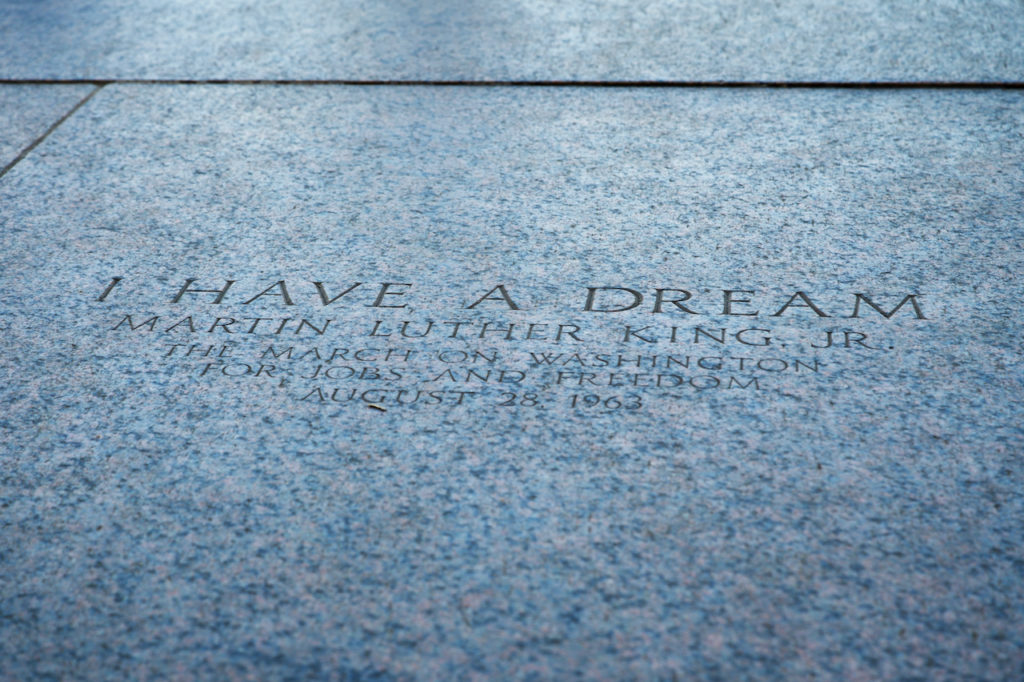
We also got to see the spot where Dr. King was standing when he delivered his “I have a dream” speech.
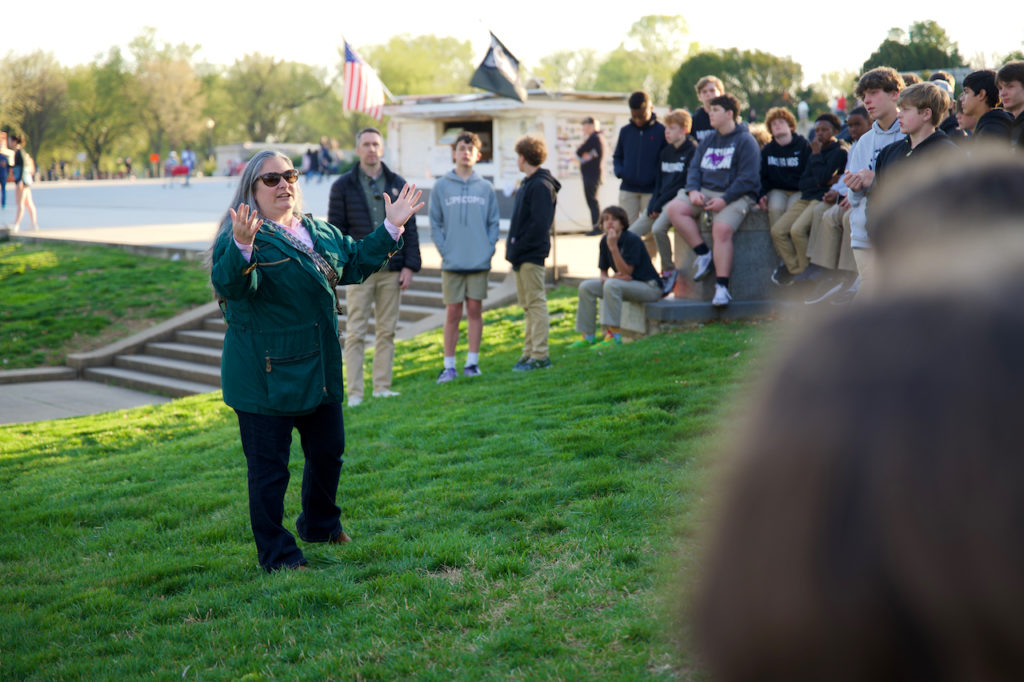
Just outside the memorial Liz and Franklin Bennett talked to us about the Vietnam Veterans Memorial. It is a very minimalist design that is meant to represent a wound that is beginning to heal from the edges.
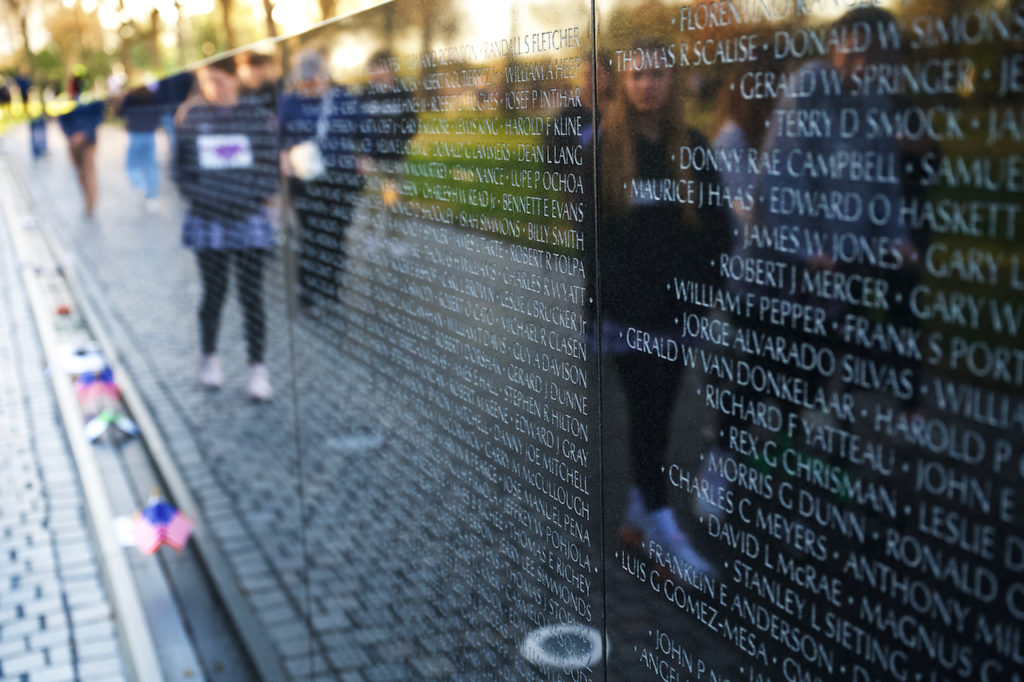
The wall contains 54,000 names of those who died in the war from 1955 to 1974. If the name has a diamond beside it then it means that remains have been identified. If there is a cross then they were known to have been lost but no remains have been uncovered.
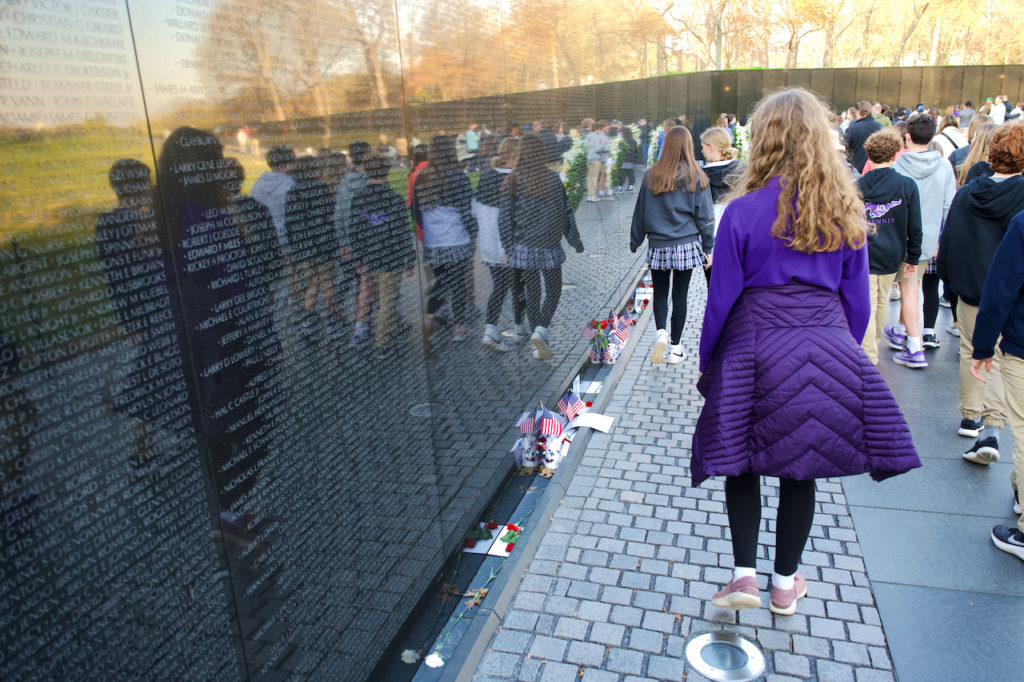
We all walked through the memorial together and Sara and I noticed many names with diamonds and crosses, and found one where a cross had been changed to a diamond.

From there we walked back to the bus to head to a Washington Capitals hockey game vs the New York Islanders. The game was a lot of fun!
Our group got back to the hotel at 10:30pm, and I was completely exhausted!
